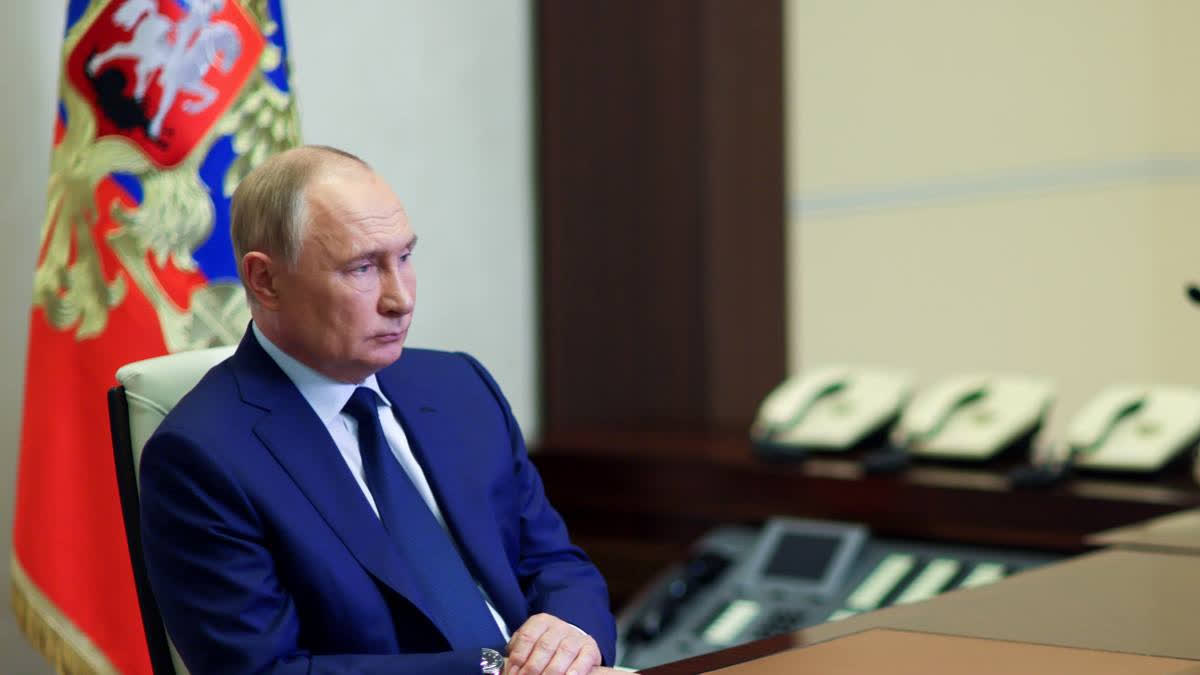Kyiv: A swift Ukrainian incursion into Russia's Kursk region was the largest such cross-border raid by Kyiv's forces in the nearly 2½-year war, exposing Russia's vulnerabilities and dealing a painful blow to the Kremlin.
The surprise foray has prompted thousands of civilians to flee the region as the Russian military struggles to repel the attack.
For Ukraine, the cross-border raid offers a much-needed boost to public morale at a time when the country's undermanned and under-gunned forces have faced relentless Russian attacks along the more than 1,000 kilometre (620-mile) front line.
A glance at the Ukrainian raid and its implications.
How did the Ukrainian attack unfold?
Kyiv's troops poured into the Kursk region from several directions early Tuesday, quickly overwhelming a few checkpoints and field fortifications manned by lightly armed border guards and infantry units along the region's 245-kilometer (152-mile) frontier with Ukraine.
Unlike previous raids conducted by small groups of Russian volunteers fighting alongside Ukrainian forces, the incursion into the Kursk region reportedly involved units from several battle-hardened Ukrainian army brigades.
Russian military bloggers reported that Ukrainian mobile groups comprised of several armoured vehicles each quickly drove dozens of kilometres (miles) into Russian territory, bypassing Russian fortifications and sowing panic across the region.
The Institute for the Study of War, a Washington-based think-tank, said Ukrainian forces have managed to push up to 35 kilometres (20 miles) deep into the region. "Ukrainian forces appear to be able to use these small armoured groups to conduct assaults past the engagement line due to the low density of Russian personnel in the border areas," it said in an analysis of the raid.
The Ukrainian forces have widely used drones to strike Russian military vehicles and deployed electronic warfare assets to suppress Russian drones and derail military communications.
While small Ukrainian mobile groups roamed the region without trying to consolidate control, other troops reportedly have started digging in around the town of Sudzha about 10 kilometres (6 miles) from the border and in some other areas.
How has the Russian military responded?
Caught off guard, Russian troops failed to mount a quick response to the incursion. With the bulk of the Russian army engaged in the offensive in Ukraine's eastern Donetsk region, few troops were left to protect the Kursk border region. The Russian units along the frontier consisted mostly of poorly trained conscript soldiers, who were easily overcome by elite Ukrainian units. Some conscripts were captured.
The manpower shortage prompted Russian military command to initially rely on warplanes and helicopter gunships to try to stem the Ukrainian attack. At least one Russian helicopter was downed and another one was damaged by the advancing Ukrainian forces, according to Russian military bloggers.
Russian reinforcements, including elite special forces units and hardened veterans of the Wagner military contractor, later started to arrive in the Kursk region, but they so far have failed to dislodge the Ukrainian forces from Sudzha and other areas near the border.
Some of the newly arriving troops lacked combat skills and suffered casualties. In one example, a convoy of military trucks carelessly stopped on the roadside near the combat area and was pummeled by Ukrainian fire.
